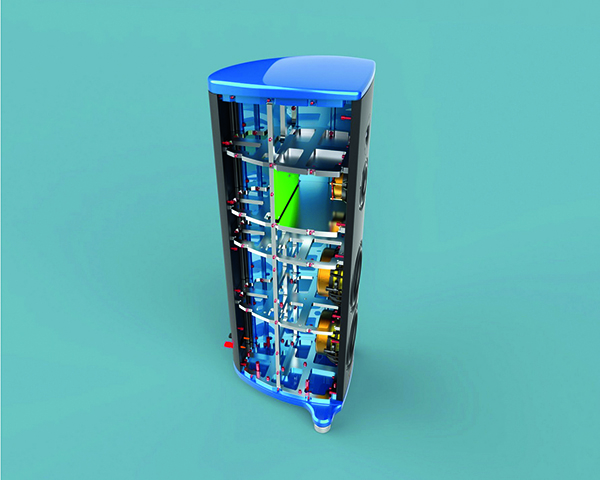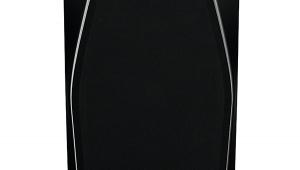Magico S3 2023 Page 2
 The S3’s skeletal internal bracing also forms a separate compartment for the 5in/125mm mid unit. The latter’s honeycomb aluminium cone is further stiffened with outer and inner layers of graphene and carbon fibre
The S3’s skeletal internal bracing also forms a separate compartment for the 5in/125mm mid unit. The latter’s honeycomb aluminium cone is further stiffened with outer and inner layers of graphene and carbon fibreAll-New Drivers
As much research has been poured into the loudspeaker’s new drivers as the new cabinet. The tweeter is now a 28mm unit, its diamond-coated beryllium dome’s increase in size – from the 26mm of the previous model – achieved without any significant increase in moving mass. This larger driver includes a new back-chamber, a neodymium motor system, and better integration into the baffle, all for increased power handling, lower distortion and improved off-axis uniformity.
The S3 2023’s new 125mm midrange unit has an aluminium honeycomb cone with a graphene and carbon fibre skin that aims to improve both stiffness, also without adding any weight and, by virtue of its profile, enhance dispersion. In classic Magico style, it’s driven by an underhung motor system combining extra-large neodymium magnets and a pure copper pole-cap. A key feature of the new unit is a (stable) lightweight foam roll surround in place of the rubber used before – again to boost efficiency and transient performance.
The 9in/230mm cones of the twin bass drivers are, in practice, larger versions of the midrange cones with their alloy honeycomb core sandwiched between stiffening layers of carbon fibre/graphene. A 125mm titanium voice coil, with a pure copper cap, combines with the suspension to give over 12mm of excursion, delivering deep, low-distortion bass at high output.
Worth the weight
Heavyweight hi-fi typically requires assistance in its unboxing and installation, and the S3 2023 is no exception given the weight and the sheer size of the wooden packing crate in which it’s delivered [see p41]. The instruction manual has a nine-step photographically illustrated sequence should you wish to try it for yourself. There are also detailed instructions for positioning the speakers, opening with some daunting advice: 'All that's required is a tape measure, a pen, a calculator, a ball of string, a couple of demo CDs, and some patience'.
 Magico’s pair of 9in/
230mm bass drivers, again featuring graphene-stiffened alloy cones, are placed close to the floor to benefit from boundary (bass) reinforcement
Magico’s pair of 9in/
230mm bass drivers, again featuring graphene-stiffened alloy cones, are placed close to the floor to benefit from boundary (bass) reinforcementI ended up with the S3 2023s about half-a-metre proud of the rear wall, well clear of side walls, and with the slightest of toe-in towards the listening position. The front-end was a familiar set-up – a dCS Vivaldi One APEX player running straight into Constellation’s mighty Centaur II stereo power amp, located between the speakers for the classic 'long interconnect run/short speaker cables' layout, with all cabling from Transparent Audio. Controlling the system with the excellent dCS Mosaic app [HFN Feb ’24], the music was hosted and sourced from USB-connected SDD storage, the cost of which was almost comical in the light of what was a truly glorious six-figure system. But then that’s high-quality listening, 2024-style. Or possibly S3 2023-style...
























































